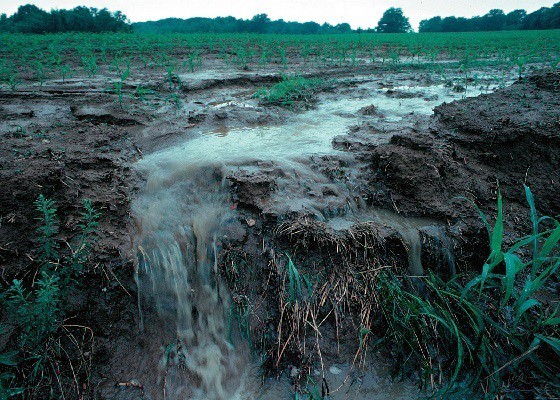We began the discussion of El Niño and floodwater preparation in our August blog, and in this continuation it’s important to understand that no matter how generous an El Niño we may wish for, it simply is not capable of ending our chronic water challenges. Issues such as water rights, increased development and rising populations, conflicts among municipalities, agriculture, environmentalists and industry, as well as policies that allow destructive drawdown and even contamination of underground aquifers must be directly addressed with a comprehensive, long-term plan that does not mortgage the future for short-term convenience and cost savings. After all, even a very wet winter could be followed by another multi-year drought.
 Many Californians imagine a return to green lawns after this year's El Niño
What can be done?
First, El Niño’s storms do not typically start until late fall, so we’re not likely to see significant storms for at least another 2 months. This is the time we need to spend preparing, not only to mitigate flooding and damage to infrastructure and crops, but to divert, save and store the rain that does fall. Remember, water levels will not magically return to normal after a single rainy season, and there is every reason to suspect that we’ll simply return to extraordinarily dry conditions when spring arrives.
Flood control: A comprehensive rainwater management system can gather, divert and collect precious rain in a controlled manner, preventing flood damage, erosion and loss of crops or livestock. Whether your solutions involve concrete, stone or simple earthen structures, durable and dependable liners are necessary to ensure that even with a strong flow of water, the rainwater management system will stay in place without permitting erosion and damage to the system.
Many Californians imagine a return to green lawns after this year's El Niño
What can be done?
First, El Niño’s storms do not typically start until late fall, so we’re not likely to see significant storms for at least another 2 months. This is the time we need to spend preparing, not only to mitigate flooding and damage to infrastructure and crops, but to divert, save and store the rain that does fall. Remember, water levels will not magically return to normal after a single rainy season, and there is every reason to suspect that we’ll simply return to extraordinarily dry conditions when spring arrives.
Flood control: A comprehensive rainwater management system can gather, divert and collect precious rain in a controlled manner, preventing flood damage, erosion and loss of crops or livestock. Whether your solutions involve concrete, stone or simple earthen structures, durable and dependable liners are necessary to ensure that even with a strong flow of water, the rainwater management system will stay in place without permitting erosion and damage to the system.
 Flooding, erosion and crop damage from uncontrolled stormwater
Water Storage: Water that has collected sediment and debris must be given a chance to settle before it can be used for irrigation or livestock watering, and then it must be safely stored, sometimes for long periods, before it is needed in the summer growing seasons. Water that gradually seeps away into the ground is a lost resource, so important surface storage ponds, lakes and reservoirs should be lined with water tight geomembrane liners that are strong, puncture-resistant and even tolerant of UV exposure in some cases.
Crop protection: In springtime, tender early crops are vulnerable to heavy rainfall and erosion of newly turned soil. Our strong and lightweight clear greenhouse covers can be used to construct temporary covers for valuable crops—these covers provide protection from rainfall and help divert water into appropriate channels for collection.
BTL Liners fabricates custom liners from our highest quality polypropylene (PPL) and reinforced polyethylene (PPE) materials. Our liners are lightweight, strong and available in the industry’s largest single panel sizes for easier installation and reduced risk of seam leaks. We package our custom liners for remarkably easy deployment and quick installation, and many durability and finishing options are available.
Call BTL at 541-447-0712 to speak to one of our experts about your needs and to learn how we can help you plan and implement a comprehensive water management system that will provide increased water security for years to come!
Flooding, erosion and crop damage from uncontrolled stormwater
Water Storage: Water that has collected sediment and debris must be given a chance to settle before it can be used for irrigation or livestock watering, and then it must be safely stored, sometimes for long periods, before it is needed in the summer growing seasons. Water that gradually seeps away into the ground is a lost resource, so important surface storage ponds, lakes and reservoirs should be lined with water tight geomembrane liners that are strong, puncture-resistant and even tolerant of UV exposure in some cases.
Crop protection: In springtime, tender early crops are vulnerable to heavy rainfall and erosion of newly turned soil. Our strong and lightweight clear greenhouse covers can be used to construct temporary covers for valuable crops—these covers provide protection from rainfall and help divert water into appropriate channels for collection.
BTL Liners fabricates custom liners from our highest quality polypropylene (PPL) and reinforced polyethylene (PPE) materials. Our liners are lightweight, strong and available in the industry’s largest single panel sizes for easier installation and reduced risk of seam leaks. We package our custom liners for remarkably easy deployment and quick installation, and many durability and finishing options are available.
Call BTL at 541-447-0712 to speak to one of our experts about your needs and to learn how we can help you plan and implement a comprehensive water management system that will provide increased water security for years to come!
 agricultural surface storage pond
agricultural surface storage pond




